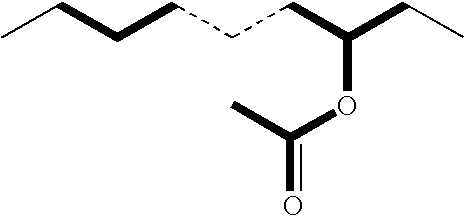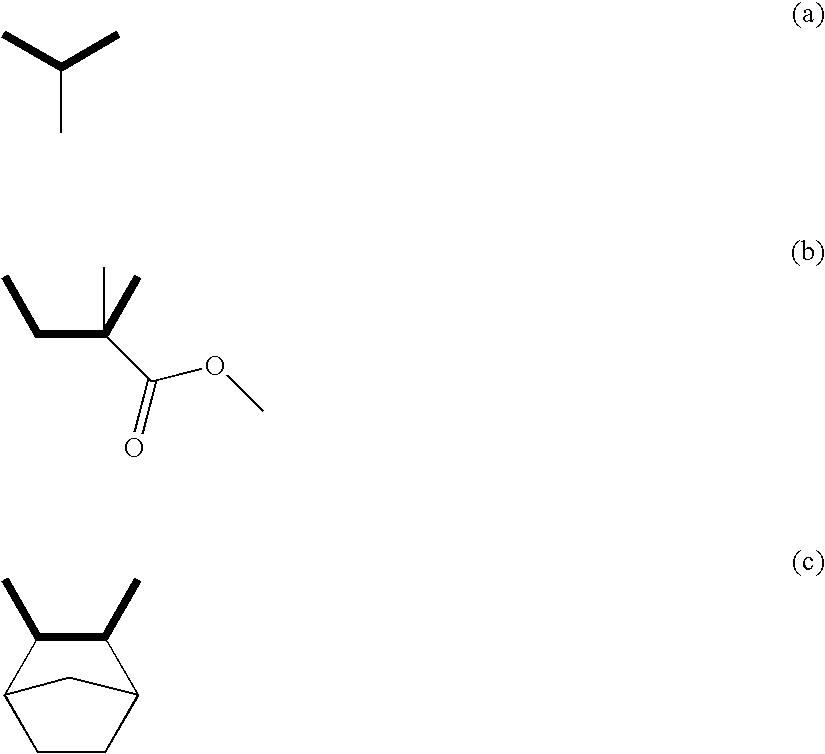Optical member and optical product having the same
a technology of optical components and optical products, applied in the direction of polarizing elements, instruments, lenses, etc., can solve the problems of insufficient polarization properties of plastic materials used as optical systems in optical products, and achieve the effects of reducing the number of optical components
- Summary
- Abstract
- Description
- Claims
- Application Information
AI Technical Summary
Benefits of technology
Problems solved by technology
Method used
Image
Examples
example 1
[0116] In a 400 ml autoclave purged with argon, 57 ml of styrene, 100 ml of a toluene solution of norbornene (5 mol / l) and 73 ml of dewatered toluene were introduced, and thereafter ethylene was fed to reach 0.4 MPa. To the mixture, 4 ml of a toluene solution of triisobutylaluminum (1 mol / l, manufactured by TOSOH AKZO Co.), a solution prepared by dissolving 10.8 mg of isopropylidene(cyclopentadienyl)(3-tert-butyl-5-methyl-2-pheno-xy)titanium dichloride in 5.4 ml of dewatered toluene, and a mixture of 39.8 mg of N,N-dimethylanilinium tetrakis(pentafluorophenyl)borate and 10 ml of dewatered toluene were added in order, and the resulting reaction liquid was stirred for 3 hours at 50 .degree. C. Thereafter, the reaction liquid was poured into a mixture of 5 ml of hydrochloric acid (12 N) and 800 ml of acetone, and the precipitated white solid was separated by filtration. The solid was washed with acetone, and thereafter dried under reduced pressure, thereby obtaining 17.14 g of a polyme...
example 2
[0117] In a 400 ml autoclave purged with argon, 17 ml of styrene, 60 ml of a toluene solution of norbornene (5 mol / l) and 54 ml of dewatered toluene were introduced, and thereafter ethylene was fed to reach 0.4 MPa. To the mixture, 4 ml of a toluene solution of triisobutylaluminum (1 mol / l, manufactured by TOSOH AKZO Co.), a solution prepared by dissolving 8.7 mg of isopropylidene(cyclopentadienyl)(3-tert-butyl-5-methyl-2-phenoxy)titan-ium dichloride in 4.3 ml of dewatered toluene, and a mixture of 31.5 mg of N,N-dimethylanilinium tetrakis(pentafluorophenyl)borate and 10 ml of dewatered toluene were added in order, and the resulting reaction liquid was stirred for 1 hour at 50.degree. C. Thereafter, the reaction liquid was poured into a mixture of 5 ml of hydrochloric acid (12 N) and 800 ml of acetone, and the precipitated white solid was separated by filtration. The solid was washed with acetone, and thereafter dried under reduced pressure, thereby obtaining 8.31 g of a polymer. A ...
example 3
[0118] In a 1.5 m.sup.3 autoclave purged with argon, 75 kg of styrene, 143 kg of a toluene solution of norbornene (5 mol / l) and 113 kg of dewatered toluene were introduced, and thereafter ethylene was fed to reach 0.4 MPa. To the mixture, 6.9 kg of a toluene solution of triisobutylaluminum (1 mol / l, manufactured by TOSOH AKZO Co.), a solution prepared by dissolving 12 g of isopropylidene(cyclopentadienyl)(3-tert-butyl-5-methyl--2-phenoxy)titanium dichloride in 2.8 kg of dewatered toluene, and a mixture of 51 g of N,N-dimethylanilinium tetrakis(pentafluorophenyl)borat-e and 8.7 kg of dewatered toluene were added in order, and the resulting reaction liquid was stirred for 3.8 hours at 50.degree. C. Thereafter, the reaction liquid was poured into a mixture of 2 liters of hydrochloric acid (12 N) and 3600 liters of acetone, and the precipitated white solid was separated by filtration. The solid was washed with acetone, and thereafter dried under reduced pressure, thereby obtaining 34 kg...
PUM
| Property | Measurement | Unit |
|---|---|---|
| Temperature | aaaaa | aaaaa |
| Length | aaaaa | aaaaa |
| Angle | aaaaa | aaaaa |
Abstract
Description
Claims
Application Information
 Login to View More
Login to View More - R&D
- Intellectual Property
- Life Sciences
- Materials
- Tech Scout
- Unparalleled Data Quality
- Higher Quality Content
- 60% Fewer Hallucinations
Browse by: Latest US Patents, China's latest patents, Technical Efficacy Thesaurus, Application Domain, Technology Topic, Popular Technical Reports.
© 2025 PatSnap. All rights reserved.Legal|Privacy policy|Modern Slavery Act Transparency Statement|Sitemap|About US| Contact US: help@patsnap.com



